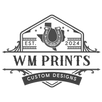Fused Deposition Modeling (FDM) has revolutionized the way we approach manufacturing and prototyping. This technology, also commonly referred to as 3D printing, layers materials to create complex geometries and intricate designs. With its versatility, cost efficiency, and ease of use, FDM has become a critical tool in various industries. In this blog post, we will explore what FDM is and highlight some of its remarkable applications.
What is Fused Deposition Modeling?
Fused Deposition Modeling is an additive manufacturing process that builds objects layer by layer. It involves extruding a thermoplastic filament through a heated nozzle, which then deposits the material onto a build platform. As each layer cools and solidifies, the 3D printer adds subsequent layers until the final shape is formed.
FDM is praised for its ability to create prototypes quickly and affordably, making it an integral part of product development in many sectors.
Applications of FDM
1. Prototyping
One of the primary uses of FDM is in prototyping. Companies can quickly create prototype models to test their designs for form, fit, and function before mass production. This agile approach allows for iterative development where adjustments can be made rapidly without significant investment.
2. Custom Tooling and Holders
Industries that require custom fixtures and tools benefit greatly from FDM. Manufacturing customized tooling components can be costly and time-consuming through traditional methods. With FDM, however, bespoke tooling solutions can be created efficiently. For example, at WM Prints, products like the Lyman Type Prep Tools Holder showcase the potential of using FDM to produce practical, custom-designed solutions that cater to specific needs.
3. Education
The educational sector uses FDM to facilitate hands-on learning. Students in fields such as engineering, design, and architecture can use 3D printers to turn their digital models into tangible objects. This enhances understanding and provides a solid foundation in the principles of design and manufacturing.
4. Medical Applications
In healthcare, FDM assists in the creation of patient-specific models used for surgical planning and creating prosthetics. The ability to customize implants and medical devices according to individual anatomical requirements is a groundbreaking advance made possible by FDM technology.
5. Art and Design
Artists and designers utilize FDM to bring their creative ideas to life in physical form. The flexibility in design and the range of materials available make FDM an attractive option for producing unique and intricate pieces.
Conclusion
Fused Deposition Modeling is a versatile and accessible technology that continues to influence various fields profoundly. From industry-specific applications to educational uses, FDM offers endless possibilities. If you're interested in exploring the practical applications of 3D printing solutions, be sure to visit WM Prints for a range of innovative products designed with FDM.
Discover how FDM can fit into your project and take advantage of the creativity and efficiency this technology brings to the table.





